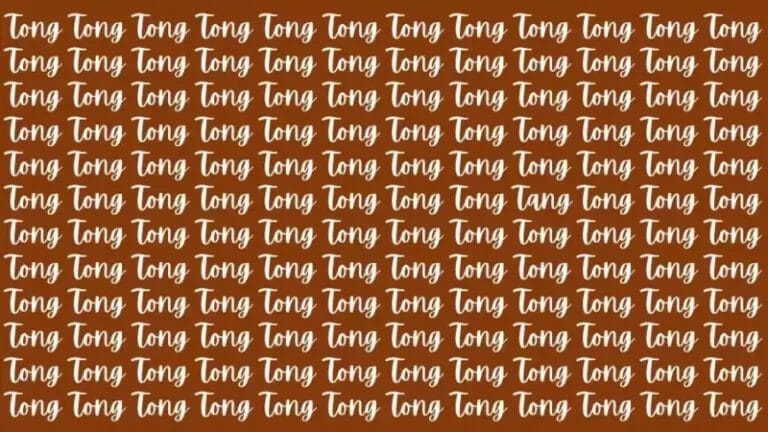Optical puzzles are all over social media these days and people are left scratching their heads when it comes to solving them. By giving the brain a little exercise, regular practice of optical illusions has important benefits, such as improving concentration and attention to detail.*
In addition, it promotes the growth of the intellect capable of more knowledge. Puzzles, works of art, mind games, and visual illusions are examples of optical illusions. Below we present you another unique and amazing Word Tang optical illusion.*
What are the different types of optical illusions? There are many types of optical illusions, but here are a few common ones:*
*Geometric Illusions: These illusions involve geometric shapes such as squares, circles, and circles, and how their size or shape changes depending on their surroundings.* Ambiguous Illusions: These illusions can be seen in multiple ways and the brain must choose between different interpretations. For example, the famous “duck-rabbit” illusion can be seen as either a duck or a rabbit. *Illusions of motion: These illusions give the impression of motion or motion, even when there is none. One example is the “whirling snakes” illusion, where still images appear to move.* Color illusions: These illusions involve the appearance of colors. For example, the “checkerboard shadow” illusion shows two squares of different shades of gray that appear to be the same color due to the surrounding shadows. Tactile illusions: These illusions involve the sense of touch, such as the “rubber hand” illusion, where the person feels that the rubber hand is their own. Cognitive illusions: These illusions involve the way the brain interprets information, such as the Stroop effect, where the brain struggles to process conflicting information, such as the word “blue” written in red ink. reading.*
If you’re a genius, try to find the word Tang in this optical illusion. Natural optical illusions are fascinating because they challenge our ability to see our surroundings. It also provides important insights into how the human brain works.*
Researchers have studied how optical illusions affect the human brain for years and have developed a series of experiments that show how different parts of the brain respond to optical illusions.*
Now is the time to test your observation skills. Take this Word Tang optical illusion test and find the hidden Word Tang within 15 seconds.
If at first you think there is no hidden word in the picture, take a closer look. Look at the picture carefully… Concentrate… Don’t give up… Okay, you’re done. Time is running out…
3…2…1…0. Stop now. Congratulations if you found the word Tang. If you still have trouble finding it, please scroll down to find a solution.
Find the word Tang here The word Tang does not look easy to most people, but if you can find it, your eyes are definitely sharp and you are a genius of optical illusion. If you don’t see it, don’t worry, we’re here to help. If you can’t find it, here is the answer.
Okay, here we go, 1…2…3… See below. If you are interested in finding optical illusions, don’t worry, our site has many similar ones for you to enjoy. Dive into our site and try to find more optical illusions like this and have fun finding them.
Categories: Trends
Source: newstars.edu.vn
Links: Brain Challenge IQ: If you have 50/50 vision, find the word Tang in 12 seconds – Tekmonk Bio, Brain Challenge IQ: If you have 50/50 vision, find the word Tang in 12 seconds – Kungfutv, Brain Challenge IQ: If you have 50/50 vision, find the word Tang in 12 seconds – Blogtomoney



GIPHY App Key not set. Please check settings